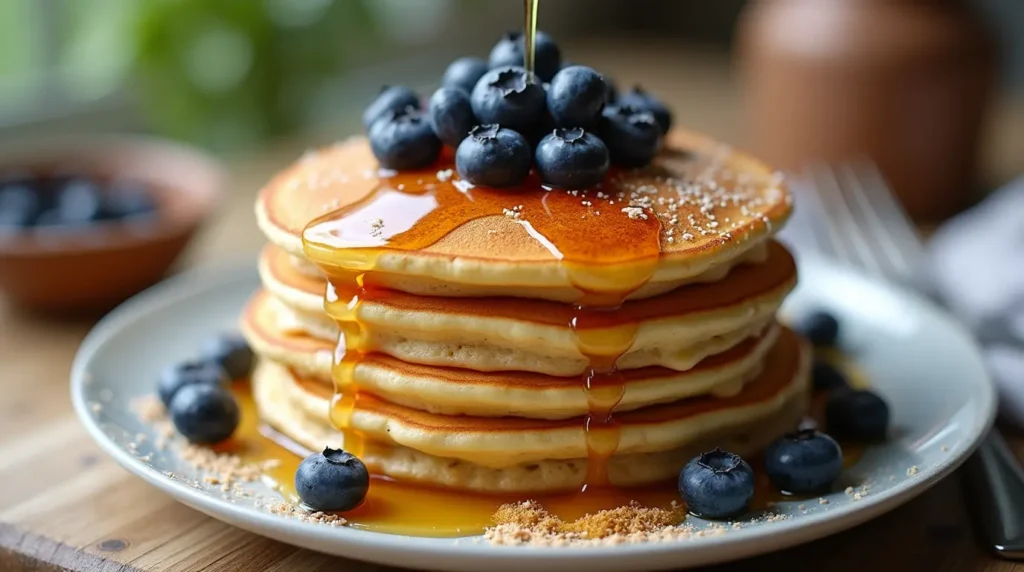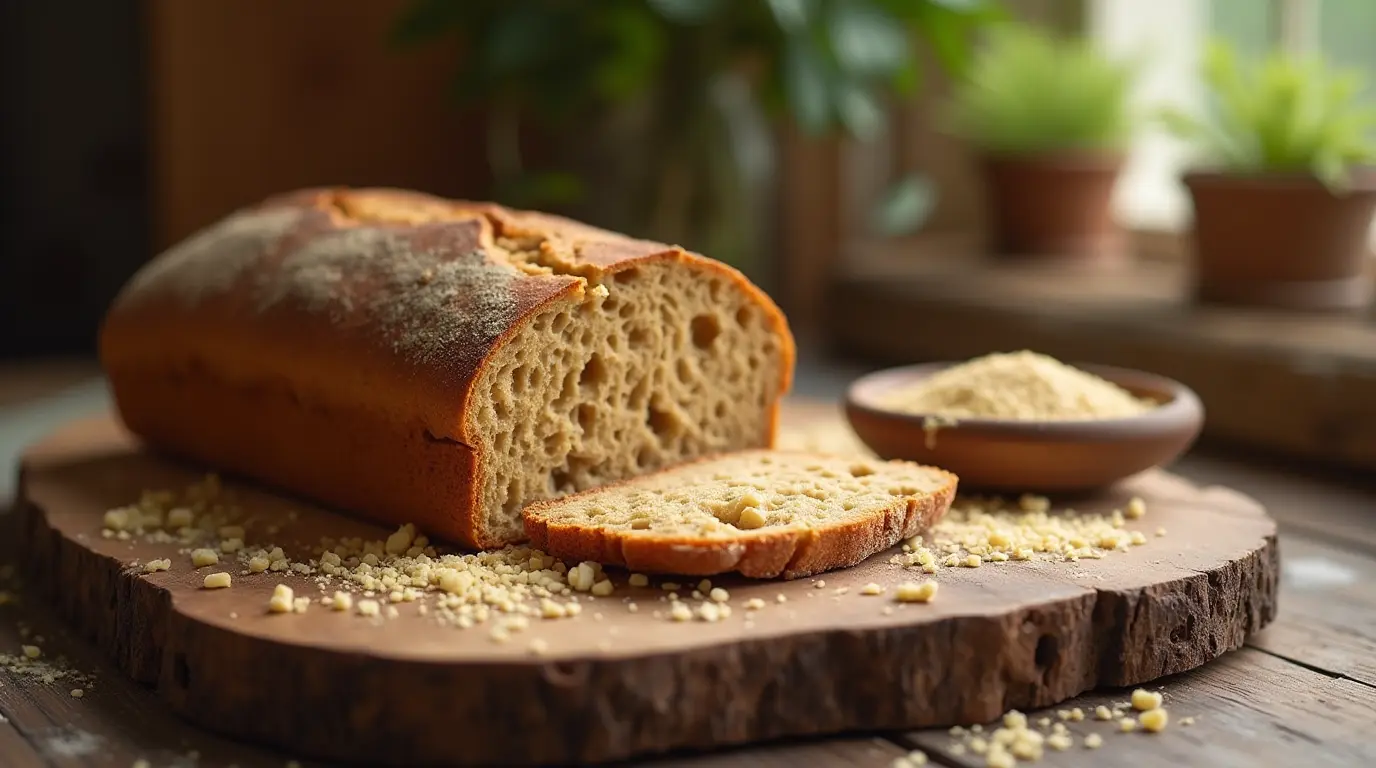Are you curious about incorporating psyllium husk recipe cooking?
This versatile, fiber-rich ingredient is a game-changer for anyone seeking to boost their health and create satisfying recipes. From its incredible binding abilities to its knack for improving texture, psyllium husk is the secret weapon behind many gluten-free and low-carb dishes.
Table of Contents
What is Psyllium Husk recipe?
psyllium husk recipe, derived from the seeds of the Plantago ovata plant, is a natural, water-soluble fiber known for its impressive health benefits. Often used as a dietary supplement, it’s a staple ingredient in gluten-free baking and low-carb cooking.
Packed with digestive-friendly fiber, psyllium husk recipe can help regulate bowel movements, manage blood sugar, and even support heart health. It’s no wonder this humble ingredient is a favorite among health-conscious cooks.
Types of Psyllium Husk: Whole vs. Powder
When it comes to psyllium husk, you’ll find two main forms: whole husks and powder. Both work wonders in recipes, but there are some key differences:
- Whole Psyllium Husks: These look like tiny flakes and absorb liquid to create a gel-like consistency. They’re excellent for recipes requiring bulk or texture, such as gluten-free bread.
- Psyllium Husk Powder: This finely ground version dissolves more quickly and evenly. It’s perfect for smoothies, sauces, or recipes needing a smoother finish.
Choosing the right type depends on the dish you’re preparing. For example, if you’re whipping up a psyllium husk recipe for fluffy bread, whole husks are ideal, while the powder works great in soups or drinks.
Why Use Psyllium Husk in Recipes?
Health Benefits of Psyllium Husk in Cooking
Psyllium husk is more than just a dietary supplement; it’s a powerhouse ingredient with amazing health benefits. Adding it to your meals can transform them into fiber-rich dishes that support digestion and overall wellness.
When used in recipes, psyllium husk can:
- Aid digestion: Its high soluble fiber content helps regulate bowel movements, making it a favorite for those with digestive concerns.
- Control blood sugar: Psyllium husk can slow sugar absorption, helping to stabilize blood sugar levels.
- Promote heart health: By lowering LDL cholesterol, psyllium husk supports cardiovascular health.
Whether you’re crafting a psyllium husk recipe for bread or smoothies, you’re adding a health boost to your meals!
Culinary Advantages of Psyllium Husk
Psyllium husk’s unique properties make it a superstar in gluten-free and low-carb cooking. This ingredient is a natural binder, giving structure to doughs and batters without gluten.
Here’s why it’s a game-changer:
- Improves texture: Psyllium husk keeps baked goods moist and prevents them from crumbling.
- Enhances stability: It’s perfect for recipes like pizza crusts and tortillas that need to hold their shape.
- Versatility: From thickening sauces to making smoothies creamy, psyllium husk does it all.
For gluten-free baking enthusiasts, psyllium husk is nothing short of magical. Pair it with your favorite recipes for delicious and satisfying results.
Curious how to use psyllium in muffins, cakes, or breads? Dive into our Healthy Baking Recipes Guide for tips on fiber-rich, gluten-free baking success.
Essential Tips for Cooking with Psyllium Husk
How to Use Psyllium Husk Properly
Cooking with psyllium husk isn’t tricky, but a few tips can help you master it like a pro:
- Hydrate before using: Psyllium husk absorbs liquid rapidly, forming a gel. Soak it for a few minutes before adding it to your recipe.
- Measure carefully: A small amount goes a long way. Too much psyllium can make your dish overly dense.
- Mix well: To avoid clumps, whisk psyllium into liquids or dry ingredients thoroughly.
Common Mistakes and How to Avoid Them
Even seasoned cooks can run into hiccups with psyllium husk. Here are some pitfalls to watch out for:
- Overusing psyllium husk: Adding too much can result in an unpleasant gummy texture. Stick to the recommended amounts.
- Skipping hydration: Dry psyllium can absorb moisture unevenly, leading to clumps or dry patches. Always soak it first.
- Incompatible substitutions: Don’t swap psyllium for other thickeners like xanthan gum without adjusting the liquid ratio.
Mastering these tricks ensures every dish is a culinary success. For more tips on gluten-free cooking, check out Healthy Baking Recipes Guide for additional insights!
Top Psyllium Husk Recipes to Try
Psyllium husk is a versatile ingredient that elevates both taste and health benefits in your dishes. Below, you’ll find a collection of delicious and creative recipes that showcase how psyllium husk can be used in cooking. Whether you’re a baking enthusiast or a smoothie lover, there’s something here for everyone.

Gluten-Free Bread with Psyllium Husk
This psyllium husk recipe is a staple for anyone following a gluten-free diet. Psyllium husk acts as a binding agent, creating a soft, moist loaf with a crunchy crust.
- Ingredients: Gluten-free flour, psyllium husk, yeast, water, and a touch of sugar.
- Instructions: Combine psyllium husk with water to form a gel. Mix dry ingredients, incorporate the gel, and let the dough rise before baking to perfection.
Psyllium Husk Pancakes
Who doesn’t love fluffy pancakes? Adding psyllium husk gives them a fiber boost while keeping them light and delicious.
- Ingredients: Almond flour, psyllium husk, eggs, and milk (or a dairy-free alternative).
- Instructions: Mix wet and dry ingredients separately before combining. Cook on a greased skillet until golden brown.
These pancakes pair wonderfully with fresh berries and a drizzle of maple syrup!
Low-Carb Psyllium Husk Pizza Crust
Craving pizza without the carbs? This low-carb crust uses psyllium husk to create a chewy, satisfying base.
- Ingredients: Coconut flour, psyllium husk, eggs, and seasonings.
- Instructions: Form a dough with hydrated psyllium, roll it out, and bake until firm. Top with your favorite pizza toppings and return to the oven.
Psyllium Husk Smoothie Boosters
A simple way to incorporate psyllium husk into your diet is by blending it into your smoothies. It thickens the drink and adds a fiber punch.
- Ingredients: Fruits, spinach, almond milk, and psyllium husk powder.
- Instructions: Blend your ingredients together until smooth. Let it sit for a minute to thicken before enjoying.
How to Store and Use Psyllium Husk
Storage Tips for Psyllium Husk
Proper storage ensures that your psyllium husk remains fresh and effective for your recipes. Since it’s highly absorbent, keeping it in a moisture-free environment is crucial.
- Store in an airtight container: This prevents moisture and contaminants from affecting the husk.
- Keep it in a cool, dry place: A pantry or cupboard away from heat sources is ideal.
- Avoid direct sunlight: Exposure to light can reduce its potency over time.
By following these simple steps, you can make sure your psyllium husk recipe ingredients are always ready to use.
Maximizing Psyllium Husk Freshness in Recipes
To get the best results, always measure psyllium husk accurately and mix it into your recipes as instructed. If you notice clumping or an off smell, it’s best to replace it with a fresh batch. Additionally, when using psyllium husk in baked goods, ensure it’s fully hydrated to achieve the right texture.
For traditional, wholesome recipes that pair well with psyllium-based meals, explore Grandma’s Recipes, a great way to balance modern health with classic comfort.
Frequently Asked Questions (FAQ)
Curious about how to use psyllium husk or its benefits? Here are answers to some common questions that pop up when cooking with this ingredient.
What Can I Mix Psyllium Husk With?
You can mix psyllium husk with water, smoothies, or even baked goods. It blends well into batters, soups, and sauces, acting as a natural thickener. Experiment with a psyllium husk recipe for bread or add it to your morning smoothie for a nutritious start!
What is the Best Way to Take Psyllium Husk?
The best way to consume psyllium husk depends on your needs. For digestive health, mixing it with water or juice is common. If you prefer culinary options, include it in baked goods, soups, or low-carb dishes like pizza crust.
Is it Safe to Eat Psyllium Husk Every Day?
Yes, psyllium husk is safe for daily use when consumed in recommended amounts. However, it’s essential to stay hydrated since psyllium absorbs water. Always consult with a healthcare provider if you have specific dietary concerns.
What is the Ratio of Psyllium Husk to Water?
For most recipes, the typical ratio is about 1 tablespoon of psyllium husk to 1 cup of water. This creates the gel-like consistency needed for binding in recipes like gluten-free bread.

